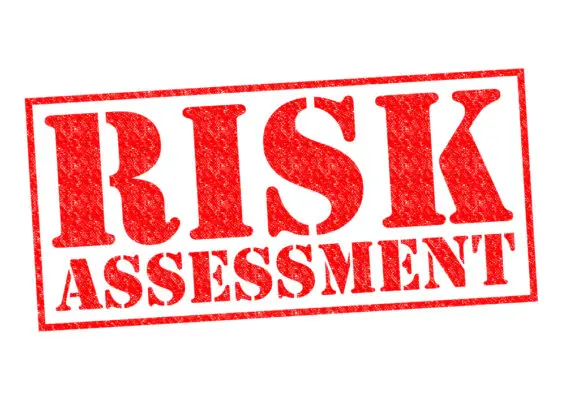Risk assessment is crucial to any fundraising activity as it helps organizations identify potential risks and develop strategies to mitigate them. By systematically evaluating the risks involved, organizations can make informed decisions and take proactive measures to minimize potential negative impacts.
This article aims to provide a comprehensive overview of fundraising risk assessment and its significance in the nonprofit sector. It will discuss the risks fundraising activities face and the benefits of implementing a risk management plan.
Additionally, the article will outline a step-by-step approach to developing a risk management plan for fundraising activities. This article aims to equip fundraising professionals with the necessary knowledge and tools to effectively identify and manage risks, ultimately enhancing the success and sustainability of their fundraising initiatives.

What is Risk Assessment?
In conducting a thorough risk assessment, organizations can effectively mitigate risks and develop strategies to ensure the smooth implementation of fundraising initiatives.
This process allows fundraisers to anticipate and address any financial, legal, or reputational risks, ultimately safeguarding the organization’s interests and maintaining its credibility in the eyes of donors and stakeholders.
Why is Risk Assessment Important for Fundraising?
Importantly, conducting a thorough risk assessment for fundraising endeavors is crucial for ensuring the success and sustainability of the initiative. Fundraising activities involve various elements, including volunteers, fundraising events, and donations, which can expose the organization to potential risks.
Organizations can identify and evaluate these risks by conducting a risk assessment, allowing them to develop a comprehensive risk management plan. This plan helps mitigate the potential risks, ensuring the safety of volunteers and participants and protecting the reputation of the charitable institution.
Risk assessment also helps identify any legal or regulatory compliance issues that may arise during community fundraising events. Ultimately, by assessing and managing risks effectively, organizations can enhance their fundraising efforts, build trust with donors, and increase the likelihood of achieving their fundraising goals.
Types of Fundraising Risk
Financial risks refer to the potential for financial loss or instability in the fundraising process, such as insufficient funds or mismanagement of funds.
Safety risks involve the potential harm or injury to individuals during fundraising activities, such as accidents or security breaches.
Regulatory risks pertain to compliance with laws, regulations, and ethical standards in fundraising, such as tax laws or privacy regulations.
Lastly, reputational risks involve the potential damage to an organization’s reputation due to negative publicity or public perception associated with fundraising activities.
Financial Risks
Financial risks in fundraising necessitate a comprehensive analysis of potential pitfalls that may hinder achieving fundraising goals. To effectively assess financial risks, organizations should consider the following factors:
- Budget: Organizations must carefully monitor and manage their budget to ensure fundraising activities do not exceed available resources.
- Money: Proper financial management is crucial to avoid misappropriation or mishandling of funds, which could damage the charity’s reputation.
- Regulations and Legal Requirements: Fundraising activities must comply with relevant regulations and legal requirements to avoid penalties or legal issues.
Organizations can proactively identify and mitigate financial risks by incorporating these considerations into a fundraising risk assessment template.
This approach helps ensure that fundraising efforts are conducted responsibly and legally compliant, promoting effective charity risk management and maximizing the potential for successful fundraising outcomes.
Safety Risks
Safety risks in fundraising necessitate a thorough analysis of potential hazards that may threaten the well-being of individuals involved in fundraising activities. Organizations need to have a risk management policy guide in place to identify and mitigate these risks effectively.
A risk management guidance document can provide valuable insights into assessing safety risks and developing appropriate control measures. Sample risk assessments and a charity risk assessment management system can also be utilized to identify common fundraising risks and develop strategies to minimize them.
A charity risk management policy should outline the responsibilities of individuals involved in fundraising activities and provide a framework for managing safety risks. Additionally, a charity risk self-assessment template can assist organizations in evaluating their current risk management practices and identifying areas for improvement.
Proactively addressing safety risks, organizations can minimize risk and ensure the safety of individuals involved in fundraising activities.
However, it is crucial to acknowledge that fundraising activities inherently involve a certain level of risk, and organizations should be prepared to address the potential challenges and uncertainties associated with these activities.
Regulatory Risks
Regulatory risks pose potential challenges for organizations involved in fundraising activities, as they must navigate and comply with various laws, regulations, and policies governing fundraising practices.
To effectively manage regulatory risks, organizations can utilize a fundraising risk assessment template encompassing the specific considerations associated with compliance.
This template should address the following key areas:
- Events: Organizations should ensure that all fundraising events are conducted in accordance with relevant regulations, such as obtaining necessary permits and licenses.
- Charity shops: If the organization operates charity shops, it must comply with regulations related to health and safety, employment, and sales tax.
- Licenses: Organizations must obtain the appropriate licenses for activities requiring specific permissions, such as raffles or lotteries.
Organizations can establish a comprehensive and professional charity risk assessment framework by incorporating these considerations into the fundraising risk assessment template.
This enables risk management data collection, such as charity risk registers and charity risk templates, to effectively identify and mitigate regulatory risks in their fundraising activities.
Reputational Risks
Reputational risks can significantly impact an organization’s standing within the public eye, potentially leading to loss of trust, donor support, and partnerships. Non-profit and voluntary organizations heavily rely on their reputation to attract financial donations and community support and engage with partnerships.
One reputational risk is the mismanagement of funds, where an organization fails to meet budget delegations or properly allocate resources. This can result in public backlash, as donors and the community may question the organization’s ability to handle funds responsibly.
Another reputational risk is poor event management, where the organization fails to deliver on promises made during fundraising events.
Additionally, negative media coverage or public scandals can tarnish an organization’s reputation and lead to a loss of trust.
Organizations must mitigate these risks by implementing strong financial control measures, ensuring transparency in their operations, and maintaining open lines of communication with stakeholders.
Benefits of Implementing a Risk Management Plan for Fundraising Activity
Implementing a risk management plan for fundraising activity offers several benefits.
Firstly, it reduces potential liability and ensures compliance with legal requirements, protecting the organization from legal consequences.
Secondly, it improves efficiency in decision-making by identifying and addressing potential risks before they occur, allowing for more informed and effective decision-making processes.
Lastly, a risk management plan helps avoid unnecessary losses and enhances the organization’s public image and brand awareness by demonstrating its commitment to responsible and ethical fundraising practices.
Reduced Potential Liability and Legal Requirements
Reducing potential liability and meeting legal requirements is crucial to consider when conducting fundraising activities.
Organizations can systematically identify and address potential risks and legal obligations associated with their fundraising initiatives by implementing a fundraising risk assessment template.
This proactive approach enables them to reduce the likelihood of legal issues and potential liabilities arising during fundraising.
The risk assessment template is a comprehensive tool for organizations to assess potential risks, such as non-compliance with fundraising regulations, financial mismanagement, or inadequate protection of donors’ personal information.
Additionally, it helps organizations identify any legal requirements they must adhere to, such as obtaining necessary permits or licenses, complying with tax laws, or ensuring transparency in financial reporting.
Therefore, by utilizing a fundraising risk assessment template, organizations can minimize their exposure to legal risks and ensure compliance with relevant legal requirements, safeguarding both the organization and its donors.
Improved Efficiency in Decision-Making and Avoidance of Unnecessary Losses
Improved efficiency in decision-making and avoidance of unnecessary losses can be achieved by systematically evaluating potential risks and legal obligations associated with fundraising activities, enabling organizations to make informed choices and protect their resources.
One effective tool for conducting such evaluations is a fundraising risk assessment template. This template provides a structured framework for identifying and assessing various risks, such as financial, reputational, and compliance risks, that may arise during fundraising campaigns.
Using this template, organizations can systematically analyze each risk, considering its likelihood and potential impact, and prioritize their mitigation strategies accordingly.
This approach allows for a more comprehensive understanding of the potential risks involved in fundraising activities, enabling organizations to allocate resources effectively and make informed decisions.
Additionally, by proactively identifying and addressing potential risks, organizations can avoid unnecessary losses and safeguard their valuable resources.
Overall, using a fundraising risk assessment template enhances decision-making efficiency and helps organizations navigate the complex fundraising landscape with greater confidence and success.
Enhanced Public Image and Brand Awareness
Enhanced public image and brand awareness can be achieved through strategic measures that cultivate a positive perception of an organization and increase recognition and familiarity among the target audience. To improve public image and brand awareness, organizations can consider the following measures:
- Incorporating a fundraising risk assessment template to identify and mitigate potential risks and liabilities associated with fundraising activities.
- Ensuring compliance with the Charity Commission Risk Management Register to demonstrate a commitment to effective risk management practices.
- Identifying key risks, such as the budget income gap, can be addressed through proactive planning and diversification of funding sources.
- Implementing robust protocols for collecting and handling money to instill trust and confidence in donors and stakeholders.
- Evaluating the impact of fundraising activities on volunteer availability and developing strategies to minimize any negative consequences.
- Obtaining necessary licenses in writing to operate legally and ethically further enhances the organization’s reputation and credibility.
Adopting these measures, organizations can enhance their public image and brand awareness, attracting more support and engagement from their target audience.

Steps to Develop a Risk Management Plan for Fundraising Activity
When developing a risk management plan for a fundraising activity, assessing the current situation and identifying any existing risks is crucial. This step involves thoroughly analyzing the fundraising activity, including its goals, target audience, and potential hazards.
Once the risks are identified, developing a comprehensive program that focuses on mitigating the potentially high-risk areas is important. This program should outline specific strategies and actions to minimize the likelihood and impact of these risks.
Additionally, establishing clear policies and procedures is essential for minimizing potential liability. These guidelines should outline the expectations, responsibilities, and protocols for all individuals involved in the fundraising activity, ensuring a standardized approach to risk management.
Assess the Current Situation and Identify Existing Risks
The current situation should be thoroughly assessed to identify any existing risks in the fundraising process. One effective way to conduct this assessment is using a fundraising risk assessment template. This template helps to systematically evaluate various aspects of the fundraising activity and identify potential risks.
The assessment should include a detailed analysis of the current fundraising strategy, target audience, methods employed, and legal or regulatory considerations. Additionally, it is essential to assess the financial situation and resources available for the fundraising activity.
Conducting a comprehensive assessment, organizations can identify existing risks such as inadequate planning, lack of resources, potential legal issues, or ineffective fundraising strategies. This process enables organizations to address and mitigate these risks proactively, ensuring a more successful and secure fundraising campaign.
Develop a Comprehensive Program to Mitigate Potentially High-Risk Areas
Developing a comprehensive program to mitigate potentially high-risk areas involves carefully analyzing the identified risks and implementing targeted strategies to minimize their impact on fundraising. This step is crucial in ensuring the success and sustainability of the fundraising efforts.
The fundraising risk assessment template provides a framework for evaluating the potential risks associated with fundraising activities. By utilizing this template, organizations can systematically identify areas of vulnerability and develop appropriate measures to mitigate these risks.
The program should address high-risk areas, such as financial mismanagement, inadequate donor communication, and regulatory non-compliance. Strategies may include implementing robust financial controls, enhancing donor stewardship practices, and establishing clear policies and procedures to ensure compliance with relevant laws and regulations.
Organizations can minimize potential risks and optimize their fundraising outcomes by taking a proactive approach and implementing a comprehensive program.
Establish Clear Policies and Procedures for Minimizing Potential Liability
To minimize potential liability, it is essential to establish clear policies and procedures that outline the expected behaviors and actions to be followed in all aspects of the fundraising process.
These policies and procedures should be documented in a fundraising risk assessment template, which guides all fundraising activities.
The template should include guidelines for identifying and assessing potential risks, as well as steps to mitigate those risks.
By establishing clear policies and procedures, organizations can ensure that all employees and volunteers know their responsibilities and the potential consequences of non-compliance.
This helps to create a culture of accountability and transparency and reduces the likelihood of legal and reputational risks.
Regular review and updates of these policies and procedures are crucial to adapting to changing regulations and industry best practices.
Clear policies and procedures are vital in minimizing potential liability in fundraising efforts.
Frequently Asked Questions
What are the key components of a risk assessment template for fundraising activities?
The key components of a risk assessment template for fundraising activities include identifying potential risks, assessing their likelihood and impact, developing risk mitigation strategies, assigning responsibility for risk management, and regularly reviewing and updating the assessment.
How can organizations identify and prioritize potential risks in their fundraising activities?
Organizations can identify and prioritize potential risks in their fundraising activities by thoroughly analyzing all related factors, such as financial, legal, and reputational risks, and using a systematic approach to assess and categorize these risks based on their likelihood and impact.
Are there any specific legal or regulatory requirements that organizations need to consider when conducting a risk assessment for fundraising?
Organizations conducting risk assessments for fundraising must consider legal and regulatory requirements. These requirements may include compliance with fundraising regulations, tax laws, data protection laws, and relevant industry codes of practice.
What are some common challenges or obstacles organizations face when implementing a risk management plan for fundraising activities?
Common challenges faced by organizations when implementing a risk management plan for fundraising activities include lack of expertise, limited resources, inadequate data collection systems, and difficulty quantifying risks and establishing risk tolerance levels.
How frequently should organizations review and update their risk management plan for fundraising activities?
Organizations should review and update their risk management plan for fundraising activities regularly, depending on the specific needs and circumstances of the organization. Regular reviews ensure the plan remains effective and responsive to changing risks and challenges.

Conclusion
Implementing a risk management plan for fundraising activity is crucial for organizations to identify and mitigate potential risks.
Organizations can effectively prioritize and address the most critical areas of concern by conducting a thorough risk assessment and categorizing different fundraising risks.
This proactive approach allows organizations to minimize potential negative impacts on their fundraising efforts and ensure the achievement of their fundraising goals.
Therefore, developing a comprehensive risk management plan is essential for organizations to navigate the complex landscape of fundraising activities.

Chris Ekai is a Risk Management expert with over 10 years of experience in the field. He has a Master’s(MSc) degree in Risk Management from University of Portsmouth and is a CPA and Finance professional. He currently works as a Content Manager at Risk Publishing, writing about Enterprise Risk Management, Business Continuity Management and Project Management.

